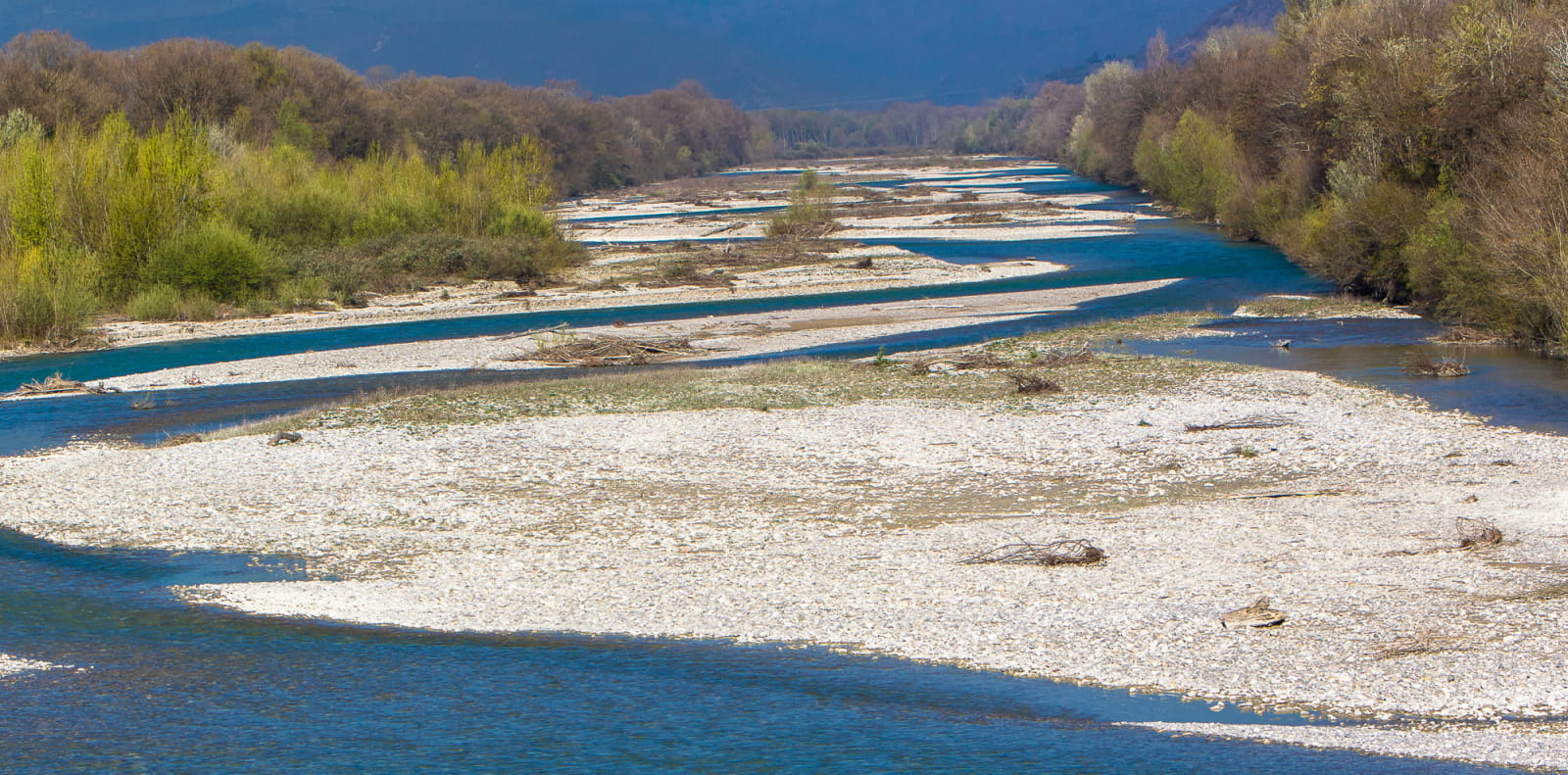By way of the Drôme river
A river still in an untamed state whose clear waters flow from the Alps towards Provence, the river Drôme is ideal for family bathing but also for canoeing and rafting. The Drôme also boasts a number of smaller rivers ideal for fishing.

The source of the Drôme is at La Batie-des-Fonds, in the haut-Diois. Its 130km course is punctuated by remarkable sites such as the Claps de Luc, the vineyards of the Diois, the Glandasse mountain, the Trois Becs, the Tour de Crest and finally the Réserve Naturelle des Ramières, before mingling with the waters of the Rhône.The river Drôme acts the part of frontier between the North and South of the département and, more noteworthy, flows entirely freely, without weirs or dams, making it the last untamed river in the Alps.

L.Pascale-ladrometourisme
Aquatic activities
From its junction with the Rhône to its source at La Bâtie-des-Fonds in the Préalpes du Sud, the river Drôme, one of the last untamed rivers of France, runs like a common thread through the area. The river offers, together with its smaller tributaries, a considerable range of aquatic activities, from the most tranquil to the most extreme. Strollers, hikers, botanists and entomologists will be beguiled by the ‘forêt de Saoû’, nestling at the heart of the highest high level syncline in Europe. The Cirque d’Archiane and its impressive limestone cliffs, marking the southern extremity of the Parc Naturel Régional du Vercors, is another not to be missed grandiose site. Lovers of winter sports will appreciate the conviviality and authenticity of the resorts at Lus-La-Croix Haute or Valdrôme.

L.Pascale-ladrometourisme
Along the Drôme river
The ‘tour de Crest’, 52 metres high, is a veritable sentinel standing guard over this picturesque medieval town and the valley it occupies. To satisfy yourself on this point you only have to admire the astonishing panorama which unfolds from this one of the highest keeps in France. Die owes its finest monuments to the Roman period, including its town walls and the many artefacts held by the ‘Musée d’Histoire et d’Archéologie’. Close by the Abbaye de Valcroissant is over 800 years old. At Châtillon-en-Diois, it’s the tinkling of 17 fountains with their stone basins which is a recurring feature of a walk through the ‘viols’ (narrow streets) of this medieval village, which today boasts the status of ‘village botanique’. Finally a ‘farandole’ (dance) through the hilltop villages which characterise this valley, reveals a flourishing artistic activity, represented by the Cliousclat potters or the painters and craft workers of neighbouring Mirmande.
